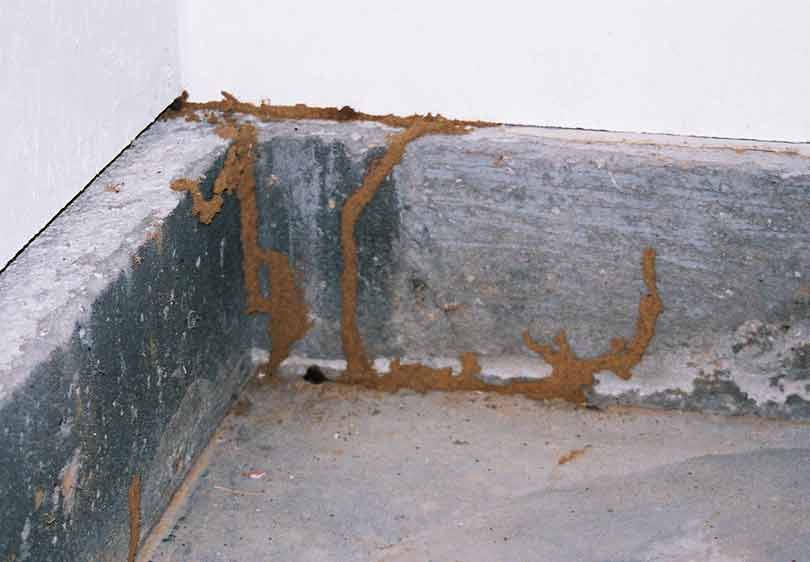Comprehensive Insect Control Provider to Combat Vole Infestations
By using a combination of identification, trapping, environment, and exemption adjustment strategies, professional insect control services can offer a customized service to battle vole problems. The crucial lies in applying a well-rounded plan that not just gets rid of existing voles however also establishes lasting control procedures to secure versus future invasions.
Vole Identification and Evaluation
Voles, little rodents appearing like mice but with shorter tails, are commonly found in gardens and yards, making exact recognition vital for reliable bug control procedures. These bugs can cause significant damage to vegetation and plants, making punctual action essential in alleviating prospective losses. When inspecting for voles, try to find their particular runways, burrow openings, and gnawed plant roots. utah vole control. Vole runways are normally located externally of the ground and are developed as they travel back and forth in between their burrows and food sources. Tunnel openings are small, regarding 1-2 inches in size, and bring about below ground tunnels where voles nest and look for shelter. Gnawed plant roots are one more indicator of vole task, indicating their existence and possible damage to greenery. By precisely identifying these signs, parasite control professionals can customize their techniques to properly manage vole problems and protect yards and lawns from further injury.

Trapping and Elimination Strategies
Efficient parasite control strategies for handling vole invasions usually entail employing specialized trapping and removal methods. Capturing is an extensively made use of method to capture voles and relocate them away from buildings.
When setting up traps, it is important to guarantee they are placed effectively and baited with vole-preferred food sources like peanut butter, seeds, or fruits. Regularly checking the catches is vital to quickly remove captured voles and prevent distress or harm to the animals. Once trapped, voles should be transferred to suitable environments much from human residences to avoid re-infestation.
Furthermore, exclusion methods, such as installing barriers or fence underground, can help discourage voles from accessing certain areas. Correct disposal of captured voles and consistent tracking of vole activity are vital parts of an effective trapping and removal approach in vole problem administration.
Exclusion and Barrier Techniques

By attending to these susceptabilities and implementing targeted exclusion and obstacle measures, residential or commercial property proprietors can substantially reduce the danger of vole problems. Eventually, a mix of trapping, removal, and positive exemption actions can assist properly manage vole populaces and protect properties from invasions.
Environment Modification and Avoidance
To mitigate vole infestations, environment adjustment and prevention strategies concentrate on changing the setting to inhibit vole habitation. Additionally, reducing excess moisture by repairing leaky pipelines, making sure correct water drainage, and removing standing water can make the atmosphere less welcoming for voles.
Including barriers like gravel boundaries or cord mesh underground can also stop voles from delving into backyards or yards. By carrying out these habitat alterations and prevention steps, building owners can proactively decrease the danger of vole infestations and protect their exterior spaces from damage.
Monitoring and Follow-Up Methods

Follow-up strategies include revisiting the treated locations to inspect for any signs of vole activity. Monitoring stations, catches, and aesthetic assessments are generally used approaches to evaluate the success of the pest control steps. By routinely evaluating these areas, parasite control experts can swiftly identify any type of rebirth of vole activity and take aggressive actions to deal with the concern prior to it escalates.
Furthermore, recording the outcomes of surveillance and follow-up tasks is important for tracking the progression of vole invasion control over time. These documents help in recognizing patterns, assessing the effectiveness of various control methods, and making educated decisions for future parasite management strategies. Routine follow-up treatments not only assist in preventing vole re-infestations but likewise add to the general success of bug control efforts.
Conclusion
Finally, detailed insect control services are important for efficiently combating vole infestations. By inspecting and identifying vole populations, executing trapping and removal strategies, making use of exclusion and barrier approaches, customizing environments, and applying monitoring and follow-up methods, homeowner can efficiently handle and avoid future invasions. It is see this here crucial to resolve vole problems quickly to stay clear of damages to residential or commercial property and potential health browse around this web-site and wellness dangers.
By employing a mix of identification, capturing, exclusion, and environment adjustment strategies, expert parasite control solutions can use a tailored solution to combat vole infestations (utah vole control). By precisely determining these signs, bug control specialists can customize their methods to properly take care of vole problems and shield gardens and backyards from further harm
Effective pest control techniques for handling vole invasions typically include utilizing specialized capturing and elimination techniques.To minimize vole invasions, habitat modification and avoidance approaches concentrate on changing the atmosphere to dissuade vole habitation.Regular surveillance and follow-up treatments are important in maintaining vole problem control steps and making sure long-term success in bug monitoring.